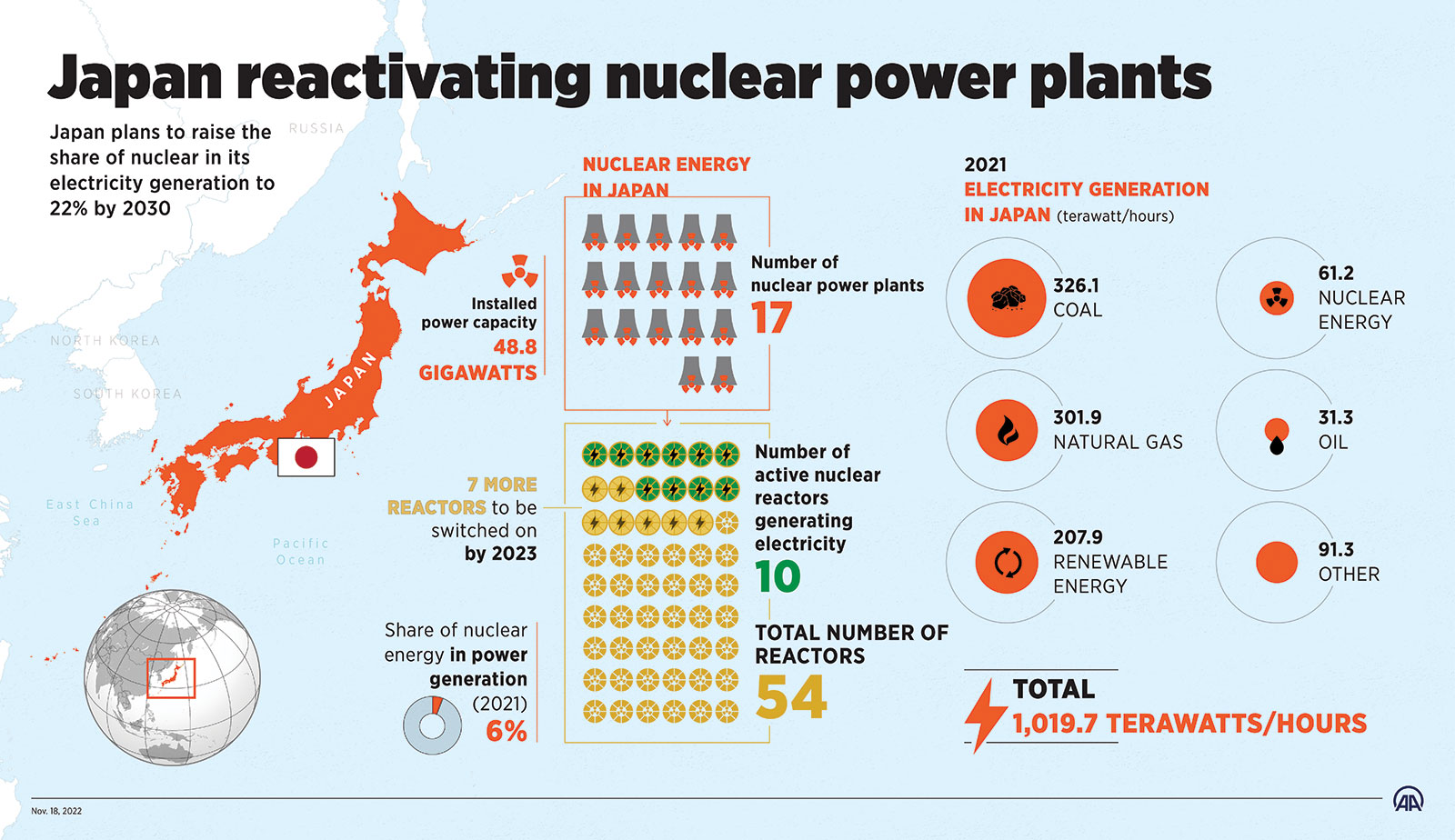Emission control
At a time of geopolitical instability and soaring energy costs, the need for Japan to push ahead with its decarbonization goals is more pressing than ever. Environmental journalist Kazuya Kitamura offers a progress report
It’s become impossible to ignore the impacts of global warming. Severe weather events are becoming more frequent and climate-fueled heat waves and wildfires, storms and hurricanes have wreaked havoc in many parts of the world. While the use of coal and natural gas will continue in the short term, decarbonization has become an ever-greater necessity. With the shift away from Russian fossil fuels after its invasion of Ukraine in February 2022, it is clear that the expansion of renewable energy is essential for energy security, and that this shift is further accelerating, especially in Europe and the United States.
It is clear that the expansion of renewable energy is essential for energy security
Progress was made at the international environmental conferences held towards the end of last year—COP27 on climate change and COP15 on biodiversity. At the former, it was decided to establish a fund to assist developing countries in dealing with the “loss and damage” caused by global warming, and at the latter a ground-breaking agreement was reached to protect 30 percent of the Earth’s land, oceans, and coastal areas.
 The COP27 conference | UN Photo
The COP27 conference | UN Photo
The nuclear option
The Japanese government is playing its part, and will participate in an international presentation of concrete measures for decarbonization at the G7 summit in Hiroshima in May 2023. The foundation for this presentation was established in the government’s “Basic Policy for Implementing GX (Green Transformation),” a 10-year roadmap announced in December 2022, which outlines ¥150 trillion in public and private GX investment to help the country lower its emissions. While the roadmap focuses on energy conservation and making renewables the main source of power, the headlines in Japan were largely about another part of the plan, the move to further utilize nuclear power—still a contentious issue in the country some 12 years after the Fukushima Daiichi disaster.
Nuclear power plants may be Japan’s trump card, but if they are to be built, practical use is still more than 10 years away
While the Basic Policy includes an increase in hydrogen usage and the decarbonization of transportation, Japan’s efforts to expand renewable energy, supposedly the mainstay of power generation, have not changed much since the invasion of Ukraine caused shock waves through global energy markets. Nuclear power plants may be Japan’s trump card, but if they are to be built, practical use is still more than 10 years away, beyond the roadmap’s stated timeframe. Moreover, the implementation of carbon pricing, which sees emission producers either charged fees for producing emissions or given incentives to reduce them, is stalling in Japan.
 Yasin Demirci/Anadolu Agency via Getty Images
Yasin Demirci/Anadolu Agency via Getty Images
Bringing the heat
Meanwhile, municipalities wanting to revitalize their communities with renewable energy have been competing to become one of 29 “decarbonization leading regions.” These regions have committed to expanding renewable energy sources such as solar power generation.
In Tottori Prefecture, however, the focus has been on a pioneering heat insulation project. Heat accounts for about half of Japan’s total energy use, and is an important component of decarbonization. Buildings in Japan are poorly insulated compared to those in Europe and the United States, and rectifying that is an urgent issue in terms of preventing energy leakage. While most efforts to combat this problem promote the implementation of insulation retrofitting of ordinary homes and other buildings, in Tottori Prefecture they’re being more ambitious. Its NE-ST scheme sets standards for heat insulation on a par with Western countries, far exceeding those of the national government, and it aims to achieve these standards in nearly 1,600 existing family houses and apartment buildings by 2030.
As well as offering subsidies of up to ¥2 million, Tottori Prefecture has launched a training and registration system to encourage local operators who can help lower the carbon footprint of the area’s houses. The local government sees the move as a win-win situation—both reducing the region’s emissions and, if the work is done by local contractors, benefiting the region economically.
The local government sees the move as a win-win situation—both reducing the region’s emissions and benefiting the region economically
Innovative projects focusing on heat utilization and cogeneration are also taking place elsewhere in the country. In the village of Ogata, Akita Prefecture, one of the leading rice farming areas in Japan, a project is taking place to accelerate decarbonization while tackling the cost burden of rice husk disposal. It will see a rice husk boiler installed in the village’s grain storage facility. The resulting hot water will be supplied to municipal facilities and hot spring facilities for heating and other purposes. Ogata mayor Hiroto Takahashi, who is also president of regional energy company Ores, believes the project will serve as a model for paddy field regions across the world.
Meanwhile in Azumino City, Nagano Prefecture, a heat supply project is making innovative use of mushrooms. Solid fuel can be generated when the dried waste of enoki mushrooms is used in combination with woody biomass chips in a newly introduced biomass boiler; the heat from the boiler can be used at a municipal hot springs facility.
While the journey towards decarbonization in Japan can sometimes feel like a frustratingly slow one, the projects in Tottori Prefecture, Ogata village and Azumino City demonstrate that there’s no shortage of ambition and innovation in the country to see this critical goal realized.